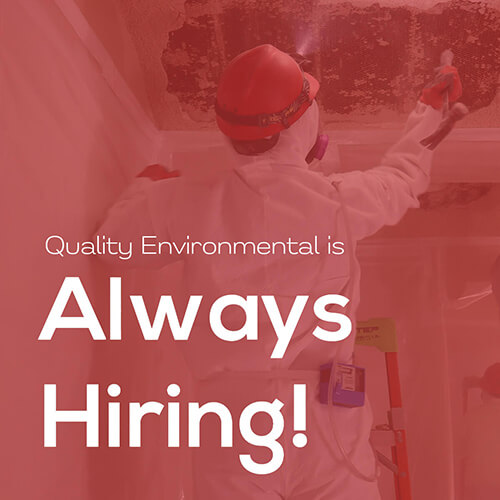Many property owners assume that lead-based paint is a problem of the past—but the truth is, it’s still present in millions of homes, schools, and commercial buildings across California. If your building was constructed before 1978, lead hazards may still be lurking in plain sight—and disturbing them through renovation or daily wear can put occupants at risk.
At Quality Environmental, Inc., we’ve spent more than 20 years working with clients across residential, commercial, and government sectors to address hazardous materials like lead, asbestos, and mold. As a licensed lead removal contractor with CDPH and EPA certifications, we’re here to help you understand when lead becomes a danger—and what to do about it.
Why Lead-Based Paint Is Still a Problem
Lead-based paint was banned for residential use in 1978, but many older buildings still have layers of it beneath newer coatings. It doesn’t always present an immediate hazard—but when paint begins to crack, chip, or get sanded during renovations, it releases microscopic lead particles into the air and dust.
Exposure to lead dust is especially harmful to children, pregnant women, and workers in close contact. Even small amounts can affect brain development, behavior, and long-term health.
Common Signs You May Have a Lead Hazard
Not sure if your property has a lead issue? Here are some warning signs:
- Your home or building was built before 1978
- You see peeling or chalky paint, especially on windows or doors
- Renovations were done without lead-safe practices
- Children or vulnerable individuals are frequently in the space
- Dust accumulates around baseboards or floors
If any of these apply, it’s worth scheduling a professional inspection. California law requires licensed professionals to handle any work that disturbs lead-based materials in regulated environments.
What’s the Difference Between Lead Testing and Lead Abatement?
Lead testing identifies whether and where lead is present. This is often done with lab samples.
Lead abatement is a permanent solution to remove or seal off lead hazards. This can involve:
- Removing paint and contaminated materials
- Encapsulating with special coatings
- Replacing windows, doors, or fixtures
- Enclosing areas with new construction materials
Lead abatement is not the same as general renovation or repainting. It must be performed by a certified contractor following strict federal and state protocols.
Learn more about how we handle lead abatement here →
Why You Need a Certified Contractor
Handling lead is a job for trained professionals. At Quality Environmental, Inc., our certified team follows EPA RRP and CDPH standards from start to finish. We use:
- Critical containment zones
- HEPA air filtration
- Safe removal and disposal practices
- Clearance testing from third-party hygienists
We’ve completed lead remediation projects in homes, schools, public buildings, and industrial facilities across California—always with a focus on safety, speed, and compliance.
Final Thoughts: Don’t Assume. Test and Protect.
If you’re unsure about lead in your building, it’s always better to ask. Many hazards go undetected until a remodel or inspection reveals the problem—and by then, exposure may have already occurred.
At Quality Environmental, Inc., we combine deep industry knowledge with a commitment to public safety. We offer free initial consultations and can help you understand your options without pressure or confusion.
Contact us today to schedule a lead hazard assessment or learn what steps to take if you’re planning renovations. Your safety—and your peace of mind—start here.





